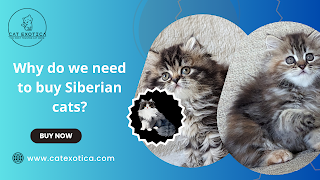What is The Meaning of Body Language in Cats?
Introduction
Cats, our beloved companions, communicate with us in various ways. Although animals cannot speak human language, they communicate effectively through their body movements and expressions. Understanding the meaning behind their movements and gestures is crucial for building a strong bond with our feline friends. Exploring its significance and how it enhances our relationship with these mysterious creatures.
The different types of body language:
1. Happy
If you have observed your cat's eyes half closed and blinking slowly, it shows that your cat is content with your presence and trusts you. When your cat's tail is held high and "shaking", it indicates that your furry friend is delighted to see you. When your cat is kneading, the harder they do it, the happier they are. Therefore, don't worry, your cat is enjoying the time with you. Additionally, when your cat has a rounded back, purring, and rubbing against your leg, it is a sign that your cat is happy. Although not all cats chirp, when you hear this trilling sound, it means that your cat is content. A chirrup is often an invitation to follow your cat somewhere or to ask for affection or play.
2. Uncomfortable
If your cat's tail has formed a question mark shape, it means that they are curious and unsure of how they feel. Also, an exposed belly does not always mean that they want to be petted; it could mean that they want to play fight. So, it's better to approach them cautiously. When a cat is feeling uneasy, it may lower its body and crouch down close to the ground. If they stop and freeze when they see you, you can be sure that they feel uncomfortable. When cats are extremely fearful or stressed, they growl, hiss, and spit. It is not a good idea to provoke a cat into biting because their bites can cause deep puncture wounds and infections. Rebuilding the trust with that cat and repairing the damaged relationship will be a challenging task.
3. Feeling angry or frustrated
A cat with a furrowed brow, slit eyes, and a direct stare is not happy. They may feel threatened and possessive. When scared, a cat holds its tail rigidly up. They may also curl their tail around their body to avoid being grabbed or bitten. A cat's body language gives clues at each stage, and it's important to back off when they flick their tail behind. A cat may become frustrated when they don't have access to essential things, such as having to wait to be let outside, or when their access to parts of the house is suddenly restricted, such as when a spare room has become a nursery and they are no longer allowed to enter. The house is suddenly restricted, such as when a spare room has become a nursery and they are no longer allowed to enter.
4. Concerned or scared
If you notice sweaty paw prints left behind by your cat, it could be an indication that they are stressed or scared. In such cases, it's best to give your cat some space to calm down. If your cat is trying to hide or leaning away from you, they are likely nervous or stressed. Even minor changes in their environment can trigger stress in cats. Some cats may also get anxious when a new pet or human visitor arrives. High stress levels can lead to aggression in cats. Moreover, cats are averse to strong odours, so avoid using such products near their bedding or litter box. To ensure your cat remains healthy and happy, provide them with a safe, stress-free environment where they can roam and live freely.
5. Very excited
If a cat growls at you, it's a warning to back off. To determine a cat's mood, observe its tail. A high, vertical tail indicates that the cat is confident, comfortable, happy, and friendly. Dilated pupils are a sign of excitement, whether the cat is playing or preparing to attack a toy. When your cat is excited, it may climb up on you, jump on you, or raise its front legs to place its paws on you. The cat's meow may become louder, more frequent, urgent, and less pleasant-sounding. Its purr may also be higher in pitch, more critical, and less pleasant in tone. A gently waving tail that moves rhythmically from side to side indicates your cat is excited, whereas thrashing or thumping is a sign of agitation.
6. You are my favourite.
If your furry friend is slowly blinking at you, don't be puzzled, it simply means that they adore you! Similarly, when a cat shows you their back or stomach, it means that they trust you and enjoy being touched. Rubbing against people and objects is also a sign of affection and a way for cats to communicate with each other. When a cat blinks slowly at you, it's a sign that they feel relaxed and comfortable in your presence. This indicates that they are not afraid of you and have faith in you. To strengthen your bond with a cat that blinks slowly at you, you can respond by blinking slowly back.
Conclusion
Understanding the meaning of body language in cats is essential for strengthening the bond between humans and felines. By paying attention to their tail movements, ear positions, posture, and facial expressions, we can decipher their emotions and respond appropriately. Through mutual understanding and respect, we can nurture a harmonious relationship with our cat companions, enriching both their lives and ours. So, let us continue to observe, learn, and appreciate the fascinating world of cat body language, fostering deeper connections with our beloved pets. Cat Exotica in Bangalore offers adorable cats and kittens ready to bring joy to your home. Contact us for more information.
Contact Us:
Call:+91 6363157838
E-Mail: catexotica.enquiry@gmail.com
Website: www.catexotica.com




Comments
Post a Comment